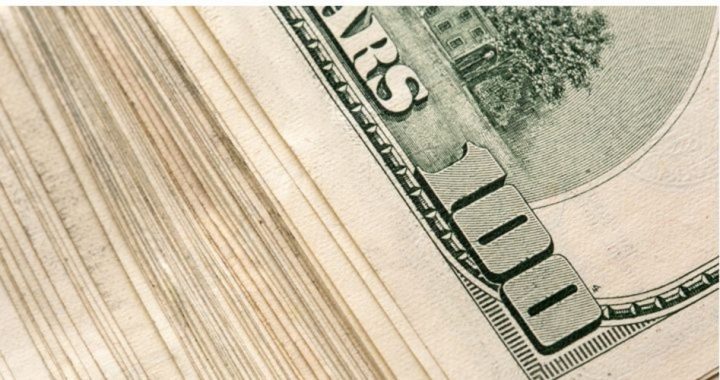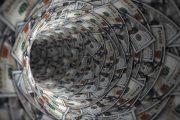
The U.S. Treasury announced Thursday that the federal government collected more money in May than in any other month in history: $240.4 billion. In the same breath, it said that the government spent $328.8 billion, creating a deficit of $88.4 billion.
From a wage earner’s perspective, it meant that in May the average worker paid $1,572 in taxes but the government spent $2,149, making up the $577 difference by borrowing. Such deficit spending is making the S&P Global credit rating agency increasingly nervous.
Just a week earlier, the agency affirmed its best rating — A-1+ — for the government’s “short term” debt, which means, in its own parlance, that the federal government’s ability to pay its current bills is “strong.” But in the longer term, the agency is far less sanguine. While holding its current long-term rating at AA+ (one full notch below its best rating), it said it’s unable to give the United States its highest rating (AAA) because of “high general government debt, relatively short-term-oriented policymaking, and uncertainty about policy formulation” for the future. It explained what it meant about that “uncertainty”:
Some of the [Trump] Administration’s policy proposals appear at odds with policies of the traditional Republican leadership and historical base. That, coupled with lack of cohesion, not just across, but within parties, complicates the ability to effectively and proactively advance legislation in Congress, particularly on fiscal policy. Taken together, we don’t expect a meaningful expansion or reduction of the fiscal deficit over the forecast period.
And what does it say about what’s likely to happen over that “forecast period”?
The U.S.’s net general government debt burden (as a share of GDP) remains twice its 2007 level. While, in our view, debt to GDP should hold fairly steady over the next several years, we expect it to rise thereafter absent measures to raise additional revenue and/or cut nondiscretionary expenditures.
What does that phrase “next several years” mean? How much time before the government’s national debt explodes upward? Says S&P:
Although deficits have declined, net general government debt to GDP remains high at about 80% of GDP. Given our growth forecasts and our expectations that credit conditions will remain subdued, thus keeping real interest rates in check, we expect this ratio to hold fairly steady through 2020. At that point, it could deteriorate more sharply, partly as a result of demographic trends.
Translation: Deficit spending will remain “subdued” for three and a half years, and then Katy bar the door!
Here is where S&P bows out of the picture, giving way instead to the Congressional Budget Office (CBO), which completed the picture in its March report:
Federal debt held by the public, defined as the amount that the federal government borrows from financial markets, has ballooned over the last decade. In 2007, the year the recession began, debt held by the public represented 35 percent of GDP. Just five years later, federal debt held by the public has doubled to 70 percent and is projected to continue rising.
“Continue rising”? By how much? And by when? The CBO is blunt:
Debt has not seen a surge this large since the increase in federal spending during World War II, when debt exceeded 70 percent of GDP. The budget office projects that growing budget deficits will cause the debt to increase sharply over the next three decades, hitting 150 percent of GDP by 2047.
So, that ratio of government debt compared to the country’s economic ability to produce goods and services was 35 percent in 2007, is now 70 percent, and will soon be 150 percent.
And what’s the reason?
The majority of the rise in spending is largely the result of programs like Social Security and Medicare in addition to rising interest rates. For example, Social Security and major health care program spending represented 54 percent of all federal noninterest spending, an increase from the average of 37 percent it has been over the past 50 years.
It appears to be an unstoppable locomotive. Non-discretionary spending (spending already locked into place by past Congresses and fully expected to be received by its beneficiaries) is on autopilot. And interest rates now coming off historic lows are only going to increase those annual deficits into the future as far as the eye can see.
The CBO is about as close as one can get to a truly non-partisan federal agency — one that has no partisan political agenda and is considered by many as the most reliable forecaster of future economic events. So it’s not only willing to cover, analyze, and present its findings candidly, it’s also willing to tell the truth. It asked, rhetorically, “What might the consequences be if current laws remain unchanged?” It answered:
Large and growing federal debt over the coming decades would hurt the economy and constrain future budget policy. The amount of debt that is projected under the extended baseline would reduce national saving and income in the long term; increase the government’s interest costs, putting more pressure on the rest of the budget; limit lawmakers’ ability to respond to unforeseen events; and increase the likelihood of a fiscal crisis, an occurrence in which investors become unwilling to finance a government’s borrowing unless they are compensated with very high interest rates.
Which brings one to the ultimate rhetorical question: What happens when even those “very high interest rates” aren’t enough to compensate those investors for the risks they are taking by loaning their money to a government that increasingly isn’t able to pay its bills and must continue to borrow increasingly massive amounts to cover its deficits? What happens next?
An Ivy League graduate and former investment advisor, Bob is a regular contributor to The New American magazine and blogs frequently at LightFromTheRight.com, primarily on economics and politics. He can be reached at [email protected].



